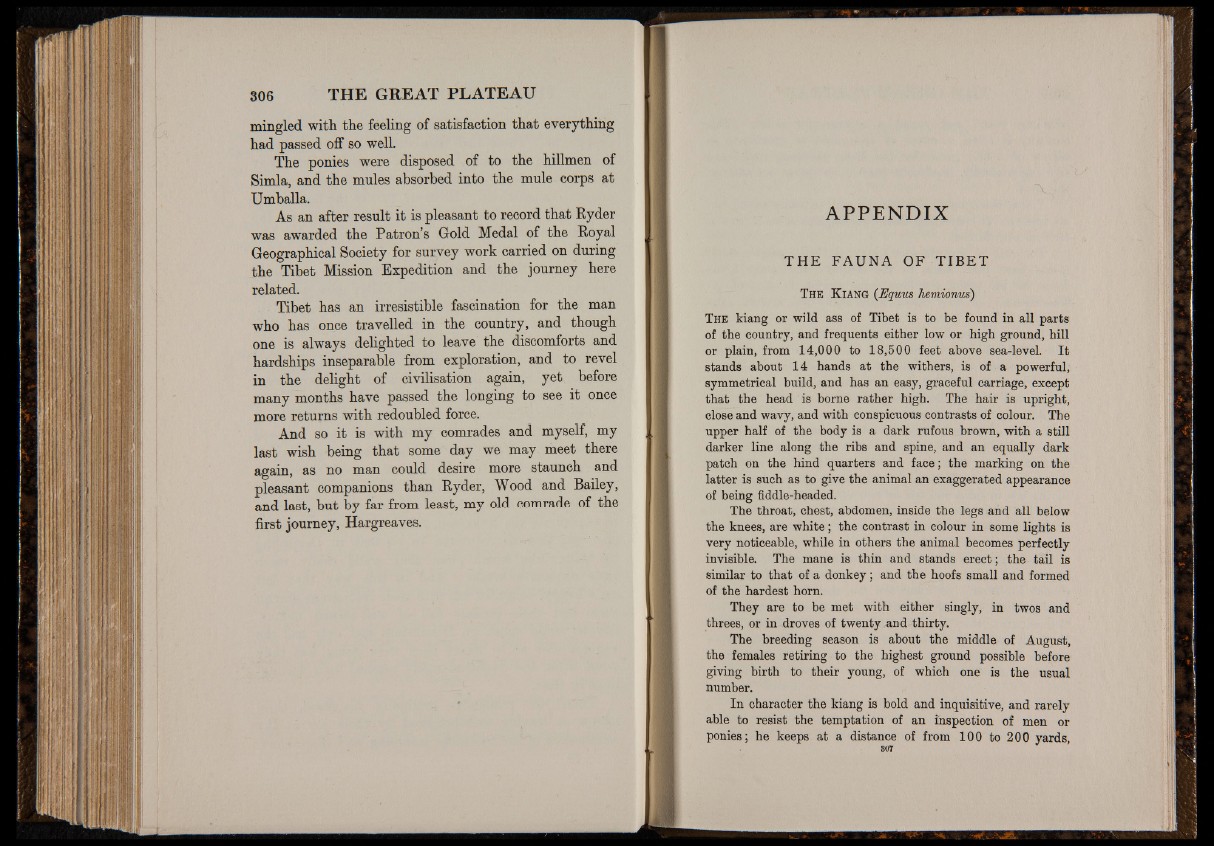
mingled with the feeling of satisfaction that everything
had passed off so well.
The ponies were disposed of to the hillmen of
Simla, and the mules absorbed into the mule corps at
Umballa.
As an after result it is pleasant to record that Ryder
was awarded the Patron’s Gold Medal of the Royal
Geographical Society for survey work carried on during
the Tibet Mission Expedition and the journey here
related.
Tibet has an irresistible fascination for the man
who has once travelled in the country, and though
one is always delighted to leave the discomforts and
hardships inseparable from exploration, and to revel
in the delight of civilisation again, yet before
many months have passed the longing to see it once
more returns with redoubled force.
And so it is with my comrades and myself, my
last wish being that some day we may meet there
again, as no man could desire more staunch and
pleasant companions than Ryder, Wood and Bailey,
and last, but by far from least, my old comrade of the
first journey, Hargreaves.
APPENDIX
T H E F A U N A O F T I B E T
T h e K i a n g ( E q u u s h e m i o n u s )
T h e kiang or wild ass of Tibet is to be found in all parts
of the country, and frequents either low or high ground, hill
or plain, from 14,000 to 18,500 feet above sea-level. It
stands about 14 hands at the withers, is of a powerful,
symmetrical build, and has an easy, graceful carriage, except
that the head is borne rather high. The hair is upright,
close and wavy, and with conspicuous contrasts of colour. The
upper half of the body is a dark rufous brown, with a still
darker line along the ribs and spine, and an equally dark
patch on the hind quarters and face; the marking on the
latter is such as to give the animal an exaggerated appearance
of being fiddle-headed.
The throat, chest, abdomen, inside the legs and all below
the knees, are white; the contrast in colour in some lights is
very noticeable, while in others the animal becomes perfectly
invisible. The mane is thin and stands erect; the tail is
similar to that of a donkey; and the hoofs small and formed
of the hardest horn.
They are to be met with either singly, in twos and
threes, or in droves of twenty and thirty.
The breeding season is about the middle of August,
the females retiring to the highest ground possible before
giving birth to their young, of which one is the usual
number.
In character the kiang is bold and inquisitive, and rarely
able to resist the temptation of an inspection of men or
ponies; he keeps at a distance of from 100 to 200 yards,
SOT